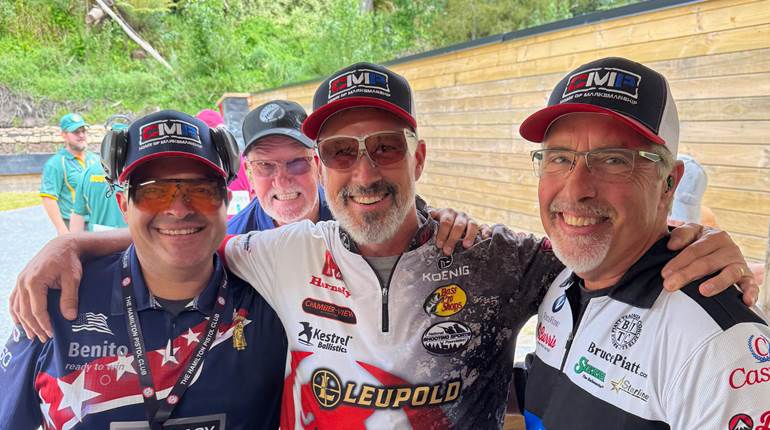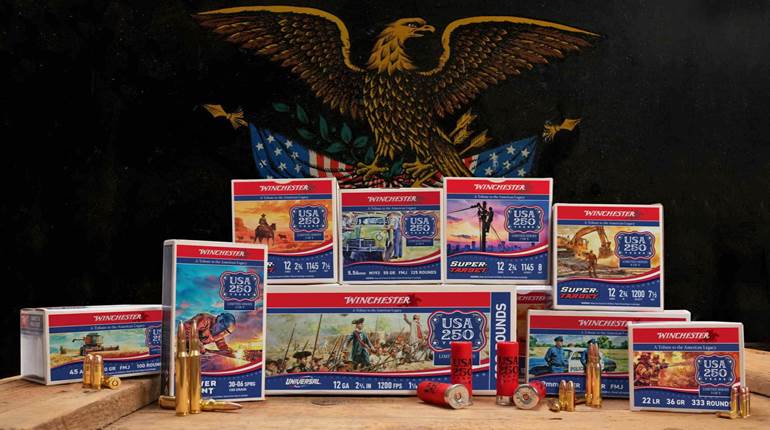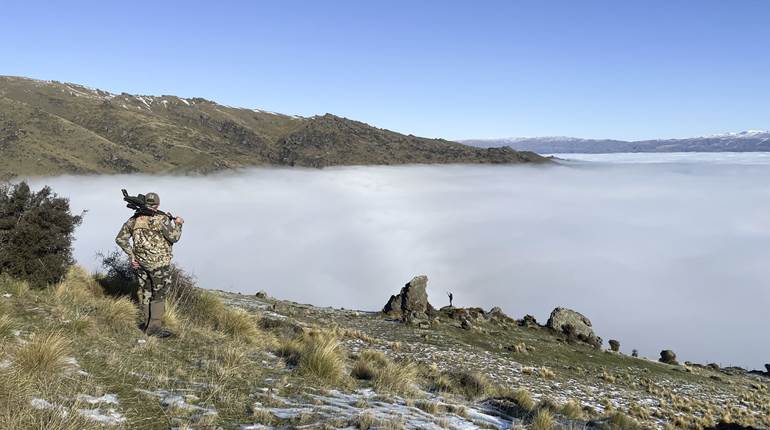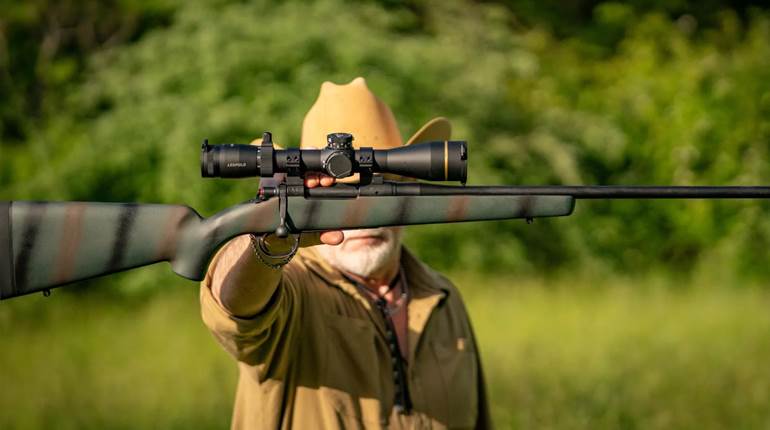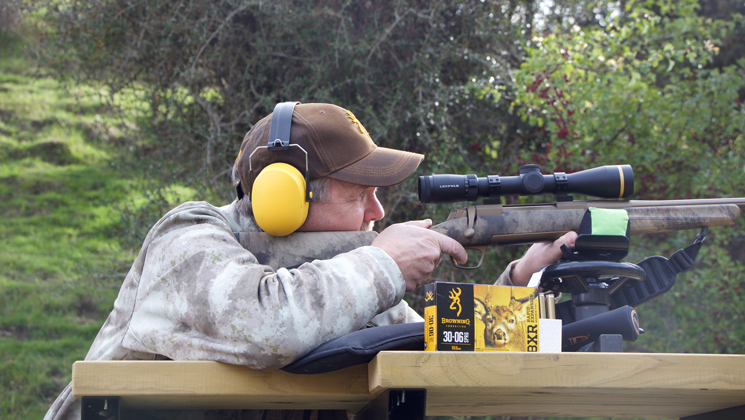
In October’s American Rifleman feature on the new Browning Ammunition, we provided an overview on how the company started from scratch to create and introduce a full-service lineup that includes rimfire, center-fire rifle, pistol and shotshell products. That approach limited reporting of actual performance, and so we’ll start to make amends right here by sharing what we’ve experienced thus far at the range and in the field with a sampling of big-game rifle loads.
There are two lines in this category, each featuring one of a pair of proprietary bullets, the rapid-upset BXR for deer and thin-skinned game, and the bonded, controlled-expansion BXC for larger, tougher animals. Both are tipped, but not with the typical small, plastic nose. The BXR’s oversized Matrix Tip is a copper-polymer blend that jump-starts expansion at the front where the jacketing is quite thin. However the deformation is checked as the taper thickens toward the base, ensuring the bullet holds together and keeps penetrating. The BXC’s Terminal Tip is anodized aluminum with a small but noticeable flat meplat. It is designed to limit expansion on impact in order to maximize penetration, but then to open consistently as the bullet plows into the vitals. The BXR is loaded in seven calibers, and the BXC now comes in six calibers.
Accuracy Testing
Following American Rifleman’s accuracy protocol of five, five-shot from a benchrest at 100 yards, we test-fired the BXR in three popular deer calibers—.243 Win., .270 Win., and .30-’06 Sprg.—followed by the BXC heavy big-game loading in .30-’06 Sprg. As expected, the non-bonded BXR loads produced the tightest groups. In an eye-opening bit of brand synergy, the results with the .30-‘06 Sprg. 155-gr. load from a Browning X-Bolt Hells Canyon Speed rifle were excellent, and the .243 Win. load was not far behind.
The full results are shown here:

Field Performance
Though the opportunities have been limited, American Rifleman editors and their hunting partners have enjoyed solid success with Browning ammunition, collectively accounting for three whitetails and one mule deer buck from South Dakota; plus four red deer stags and one fallow deer buck on a trip to New Zealand. In no small measure, those outcomes hinged on the accuracy demonstrated in our range trials. In all but one case, the hunter’s first shot either dropped the quarry in its tracks or caused it to go down in close proximity. The exception was a stag that required a follow-up shot after it vanished from sight into and subsequently emerged across a brush-filled draw. Ranges of our shots extended from about 70 to 250 yards.
Along with first-shot accuracy, bullets must penetrate and expand reliably regardless of the distance, the size of the animal and the striking angle, and both BXR and BXC did exactly what is expected in order to cause quick, humane kills under fluid real-world hunting scenarios. Two bullets recovered during these hunts, both 185-gr. BXCs fired from a Browning X-Bolt in .30-‘06 Sprg., met both performance criteria. The one that hit my red deer from a quartering-away angle smashed diagonally through to the off-shoulder and ended under the hide, retaining 67.3 percent (124.5 grs.) of its original weight while expanding from .308” to .661” in diameter. The other, after traversing nearly the entire length of my fallow buck, retained 76.6 percent (139.8 grs.) of weight upon recovery despite opening up to .744” diameter. At least one-third of the shank was left intact on both recovered BXCs and both had extensive fold-back.
Below is a breakdown of each encounter:
Whitetail buck range—130 yds./shot placement—broadside behind shoulder, complete pass through; outcome—ran about 40 yds. then dropped.
Whitetail doe range—70 yds.; shot placement—broadside on shoulder, complete pass through; outcome--ran about 40 yds. then dropped.
Whitetail buck range—100 yds.; shot placement—broadside, lungs, complete pass through; outcome—ran 30 yds. then dropped.
Mule deer buck rang—160 yds.; shot placement—slight quartering away, high lung, complete pass through; outcome—dropped in tracks.
[All of the above take with: rifle—Browning AB3 or X-Bolt; ammo—Browning BXR .270 Win. 134-gr. or .30-’06 Sprg. 155-gr.]
Fallow deer buck range—85 yds.; shot placement—root of tail, bullet path through ham, paunch and lungs, came to rest in brisket; outcome—deer remained in place until dropped by follow-up shot.
Red deer stag range—120 yds.; shot placement—broadside uphill angle through lungs, complete pass through; outcome—kicked, walked 15 yds. then dropped.
Red deer stag range—180 yds.; shot placement—broadside downhill angle through shoulder/lungs, complete pass through; outcome—ran short distance then dropped.
Red deer stag range—250 yds.; shot placement—(first shot) quartering-on low in chest; (second shot) broadside downhill angle through lungs; outcome—(1) traveled through cover across draw; (2) ran short distance then dropped.
Red deer stag range—125 yds.; shot placement—quartering away, lungs and shoulder, came to rest on offside; outcome—kicked, ran 20 yds. and stopped, dropped with second shot.
[All of the above taken with: rifle—Browning X-Bolt; ammo—Browning BXC .30-’06 Sprg. 185-gr.] 
Track Record in the Making
What we’ve seen should, at the very least, pique big-game hunters’ interest. This fall is the new Browning line’s first full season, and so of course it has a long way to go in building a track record, perspective gained from the experiences of many more hunters firing it on all kinds of game in all sorts of weather and shooting conditions. And so here’s an open invitation for all who’ve chosen to stoke their rifles with Browning BXR and BXC loads: Add your observations and results right here so that Americanrifleman.org can share it with the world.












